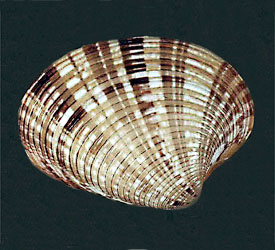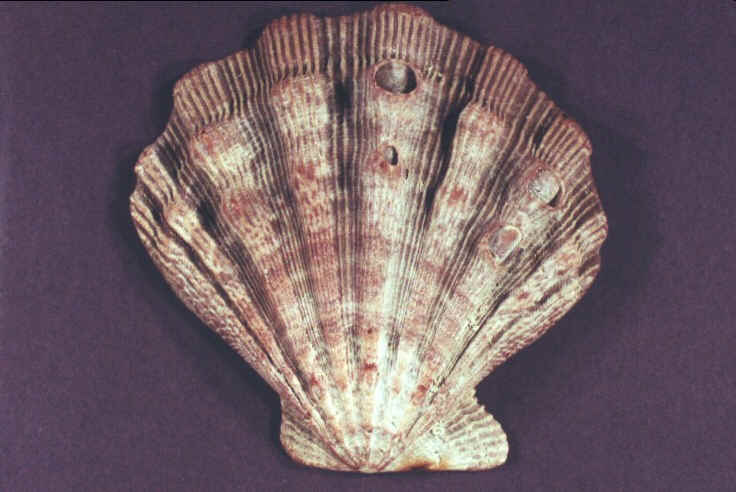Preface to Class of Bivalvia

Photos: Ralph Body
|
Literal meaning: Having a two part valve or shell
Common names: Clam, Mussel, Scallop, Oyster |

|
Shell:
All members of this class are bilaterally symmetrical with a shell. The two-part
shell is hinged with a strong elastic type ligament. When one or more of the
adductor muscles contracts the shell opens. When these muscles relax the spring-like
ligament pulls the valves closed. Hinge teeth on each valve allow the valves
to fit perfectly together.
|
Classification of bivalves is usually based on the number and location of these
hinge teeth. However, the appearance of the hinge or gill structure are used
by some taxonomists for classification purposes.
The internal surface of the shell is lined with a pearly
nacreous material secreted
by the animal.
The external surface may be ribbed or smooth, ornamented with
spines, grooves, scales or other processes.
Although all bivalves have a two-part shell, the valves may be of different
size or shape, some may even be partly fused. One valve may be permanently attached
to a hard object or the shell may be attached by
byssel threads to a hard object.
Most species live in the sand or mud without a permanent attachment.
Animal:
The animal has no head or cephalic sense organs such as eyes.
A large muscular foot is used for burrowing through the sand or mud.
Gills called ctenidia are used mainly for causing circulation of water. This
brings water containing microorganisms to the animal and helps with the removal
of wastes.
There is a two-chambered heart.
The stomach is connected to the mouth by a short esophagus.
Unlike other mollusks
there is no radula.
Bivalves are rarely hermaphroditic.
Fertilization occurs in the open water or
in the mantle cavity.
Habitat:
Bivalves live in marine, brackish or fresh waters.
They inhabit waters shallow or deep, warm or icy cold world-wide.
Most live in the mud or sand substrate
although mussels can survive exposed to the air for periods of time between
tides.
Food:
Known as filter-feeders, bivalves strain microorganisms from the water, mud
or sand.
Food may be caught in mucus strands or filtered through the gills.
Reference: Class - Bivalvia
Keen, M.A. 1971; Purchon, R.D. 1968; Yonge, C.M. and Thompson, T.E. 1976



